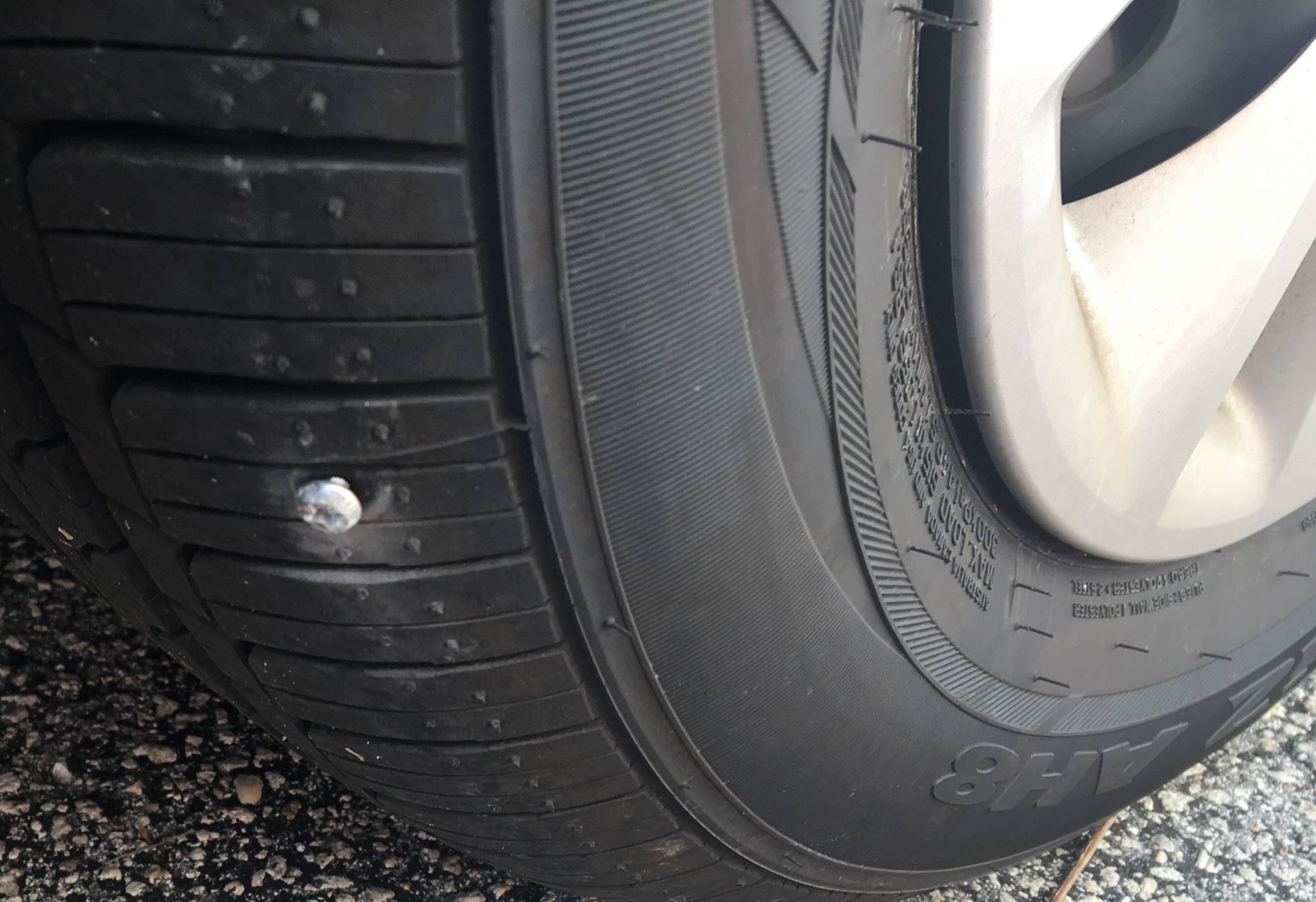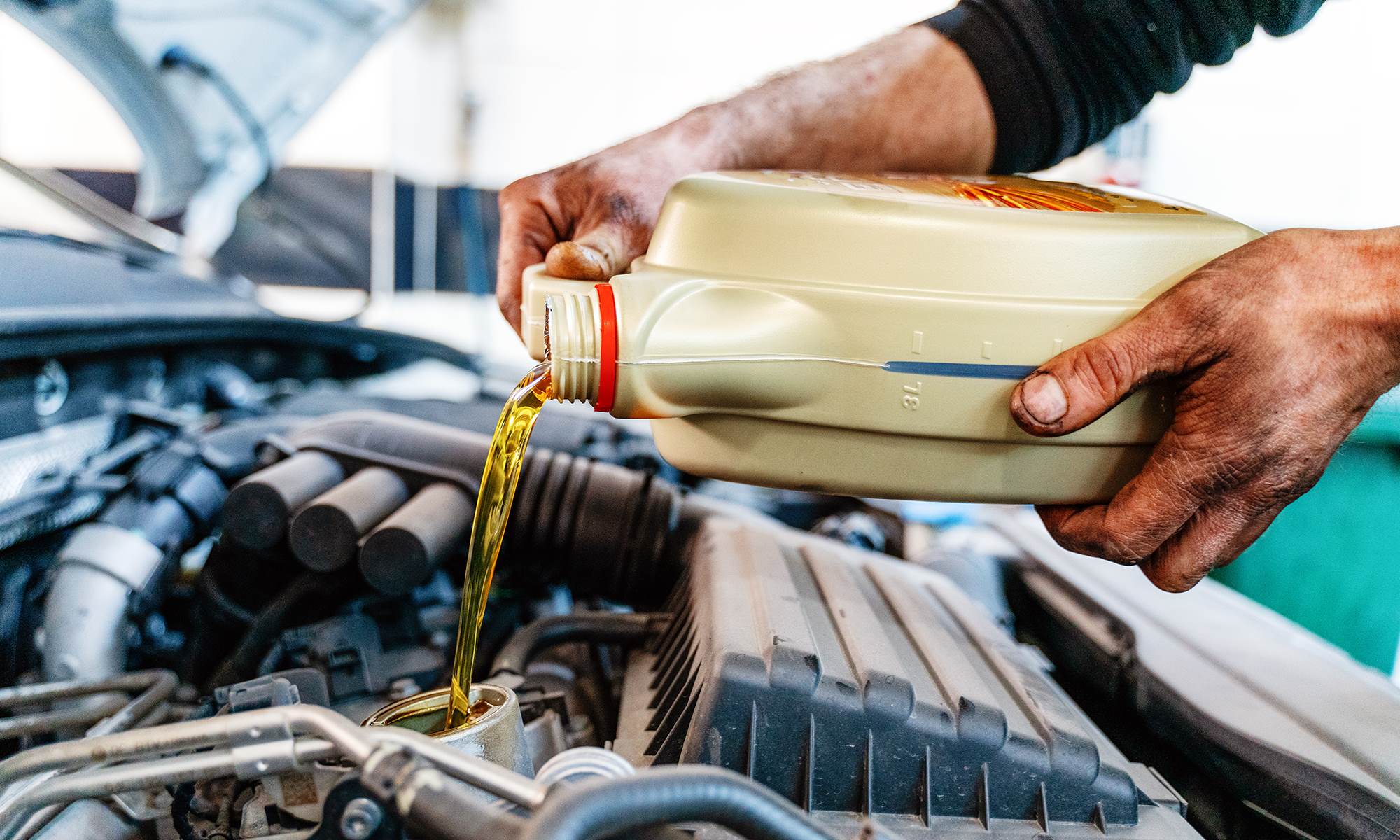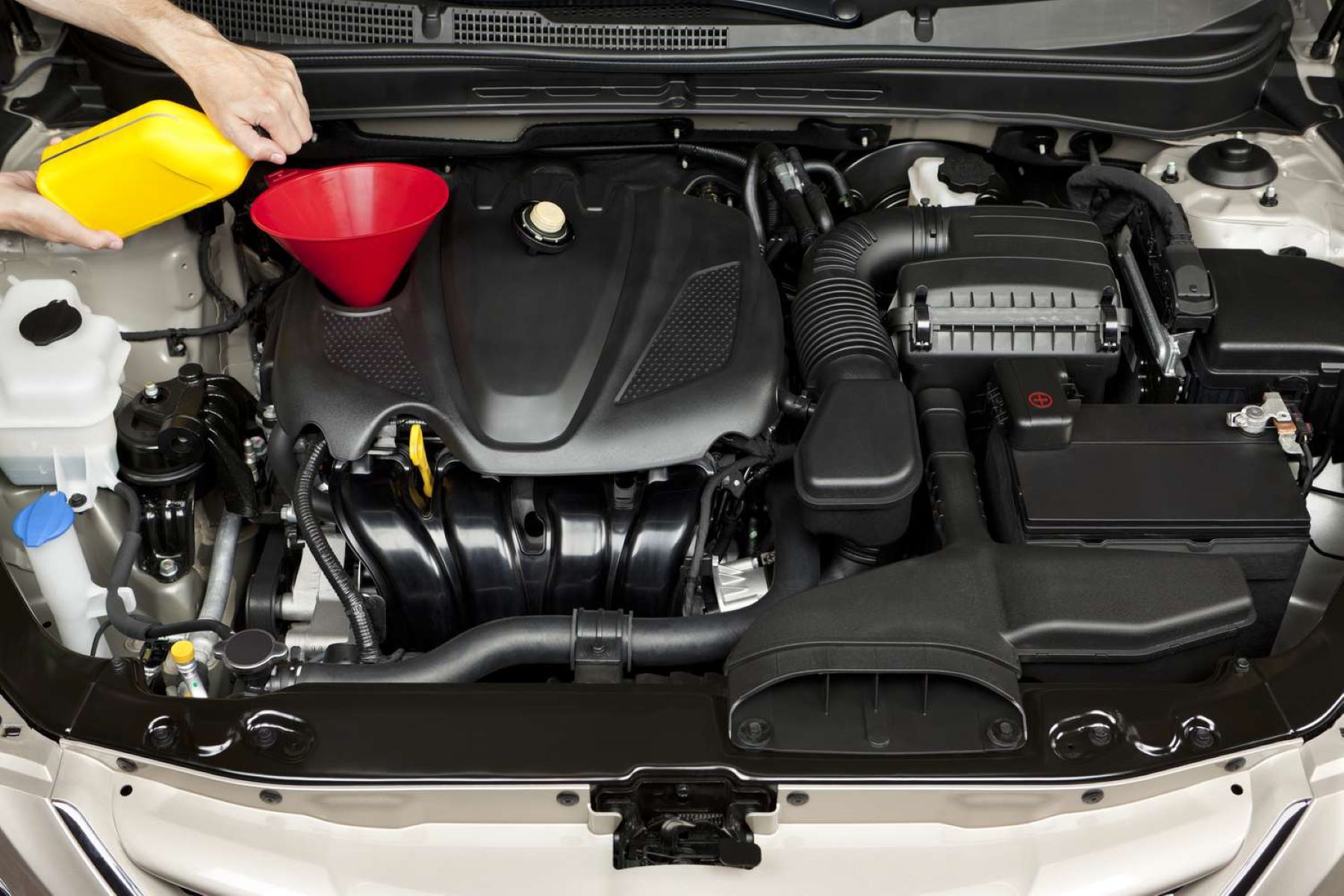Home>Automotive>Why You Should Remove And Plug A Screw In Your Tire, Even If No Air Is Leaking


Automotive
Why You Should Remove And Plug A Screw In Your Tire, Even If No Air Is Leaking
Published: February 4, 2024
Learn why it's important to remove and plug a screw in your tire, even if there's no air leaking. Essential advice for automotive maintenance.
(Many of the links in this article redirect to a specific reviewed product. Your purchase of these products through affiliate links helps to generate commission for Regretless.com, at no extra cost. Learn more)
Table of Contents
Introduction
Discovering a screw lodged in your tire can be a disheartening experience. Whether it's a small, innocuous screw or a larger one, the sight of it can send shivers down your spine as you contemplate the potential consequences. While it may seem tempting to ignore the issue, especially if there is no visible air leakage, the truth is that leaving a screw in your tire can pose serious risks. In this article, we will delve into the dangers of neglecting a screw in your tire, and why it is crucial to promptly remove and plug it, even if no air is leaking. Additionally, we will explore the step-by-step process of safely removing and plugging a screw in your tire, ensuring that you are equipped with the necessary knowledge to handle this situation effectively. So, let's embark on this journey to understand the significance of addressing this seemingly minor issue before it escalates into a major problem.
The Dangers of Leaving a Screw in Your Tire
Leaving a screw embedded in your tire, even if it appears to be a minor inconvenience, can lead to a host of potentially hazardous situations. Here are some of the dangers associated with neglecting to address this issue promptly:
1. Tire Deflation:
Despite the absence of immediate air leakage, a screw in your tire can compromise its structural integrity. Over time, the screw may gradually cause air to seep out, leading to gradual deflation. This can result in decreased tire pressure, affecting your vehicle's handling, stability, and overall safety on the road. Moreover, prolonged deflation can lead to irreversible damage, necessitating the replacement of the tire.
2. Sudden Blowouts:
A seemingly stable tire with a screw lodged in it can suddenly give way, leading to a blowout. This abrupt loss of tire pressure can be extremely dangerous, especially at high speeds, as it can cause the vehicle to veer out of control, potentially resulting in a catastrophic accident.
3. Compromised Traction:
The presence of a foreign object, such as a screw, can weaken the tire's grip on the road surface. This compromised traction can be particularly perilous in adverse weather conditions, such as rain or snow, where the risk of skidding or loss of control is heightened.
4. Structural Damage:
If the screw continues to penetrate the tire, it can cause internal structural damage. This can weaken the tire's integrity and increase the likelihood of a blowout, especially under the stress of normal driving conditions.
5. Costly Repairs:
Neglecting to address a screw in your tire can lead to more extensive and costly repairs down the line. What may have initially been a simple fix could escalate into a situation requiring tire replacement or even damage to other components of the vehicle.
In summary, the dangers of leaving a screw in your tire extend beyond the inconvenience of a potential flat tire. The risks encompass compromised safety, potential accidents, and financial implications. It is crucial to recognize the severity of this seemingly minor issue and take proactive measures to address it promptly.
This section highlights the perils associated with disregarding a screw in your tire, emphasizing the importance of taking immediate action to mitigate these risks.
The Importance of Removing and Plugging a Screw in Your Tire
The significance of promptly removing and plugging a screw in your tire cannot be overstated. While the sight of a screw embedded in your tire may initially seem inconsequential, the potential consequences of neglecting this issue are far-reaching. By addressing this issue proactively, you can safeguard not only your safety but also prevent costly repairs and potential accidents.
-
Preserving Tire Integrity: Removing the screw and plugging the puncture is crucial for preserving the integrity of the tire. Even if there is no immediate air leakage, the presence of the screw compromises the structural integrity of the tire. By removing the screw and plugging the hole, you prevent gradual air seepage and the risk of sudden deflation or blowouts.
-
Ensuring Road Safety: A stable and properly functioning tire is essential for road safety. By promptly addressing the screw in your tire, you minimize the risk of sudden blowouts or compromised traction, thereby enhancing the overall safety of your vehicle and its occupants.
-
Preventing Further Damage: Neglecting to remove and plug the screw can lead to more extensive damage to the tire. As the screw continues to penetrate the tire, it can cause internal structural damage, potentially necessitating costly repairs or tire replacement. By taking prompt action, you mitigate the risk of escalating damage and associated expenses.
-
Cost-Effective Solution: Addressing the issue early on by removing and plugging the screw is a cost-effective solution. It prevents the need for more extensive repairs or tire replacement, saving you both time and money in the long run.
-
Peace of Mind: Knowing that the screw has been removed and the puncture has been adequately plugged provides peace of mind. It eliminates the looming uncertainty associated with driving on a compromised tire, allowing you to focus on the road without the nagging worry of a potential tire failure.
In summary, the importance of removing and plugging a screw in your tire lies in preserving tire integrity, ensuring road safety, preventing further damage, and offering a cost-effective and peace-of-mind solution. By recognizing the significance of this proactive approach, you can effectively mitigate the risks associated with a seemingly minor issue and maintain the optimal performance and safety of your vehicle.
How to Remove and Plug a Screw in Your Tire
When faced with the presence of a screw in your tire, it is essential to address the issue promptly to prevent potential hazards. Here's a step-by-step guide on how to safely remove and plug a screw in your tire:
Read more: Why Older Women Should Ditch The Swimsuit
1. Assess the Situation:
Begin by parking your vehicle in a safe location and inspecting the tire with the embedded screw. Ensure that the area around the tire is clear of any obstacles, and engage the parking brake for added safety.
2. Gather the Necessary Tools:
To effectively remove and plug the screw, you will need a few essential tools, including a tire repair kit, pliers, a reamer, and a plug insertion tool. These tools are typically included in most tire repair kits and are readily available at automotive supply stores.
3. Remove the Screw:
Using the pliers, carefully remove the screw from the tire. It is important to exercise caution to prevent further damage to the tire during this process. Once the screw is extracted, inspect the puncture to assess its size and the extent of any potential damage.
4. Prepare the Puncture:
Utilize the reamer from the tire repair kit to clean and enlarge the puncture, ensuring that it is ready to receive the plug. This step is crucial for creating a secure and airtight seal when the plug is inserted.
5. Insert the Plug:
Take a plug from the tire repair kit and insert it into the puncture using the plug insertion tool. Ensure that the plug is inserted fully and evenly, effectively sealing the puncture and preventing air leakage.
6. Trim the Excess Plug:
Once the plug is securely in place, trim any excess length using the blade of the plug insertion tool or a sharp knife. This ensures that the plug does not protrude from the tire's surface, maintaining a smooth and even tread.
7. Reinflate the Tire:
After the plug is in place, use a tire inflator or air compressor to reinflate the tire to the recommended pressure. This step verifies the effectiveness of the plug and ensures that the tire is ready for continued use.
By following these steps, you can safely remove and plug a screw in your tire, effectively addressing the issue and restoring the tire's integrity. It is important to remember that while this procedure can temporarily resolve the immediate problem, it is advisable to have the tire professionally inspected and repaired to ensure long-term safety and performance.
This section provides a comprehensive guide on the step-by-step process of removing and plugging a screw in your tire, empowering you to address this issue effectively and maintain the safety and functionality of your vehicle.
Conclusion
In conclusion, the seemingly innocuous presence of a screw in your tire, even if no air is leaking, should not be underestimated. The risks associated with neglecting to address this issue extend far beyond the inconvenience of a potential flat tire. By understanding the dangers of leaving a screw in your tire and recognizing the importance of promptly removing and plugging it, you can proactively safeguard your safety, prevent costly repairs, and maintain the optimal performance of your vehicle.
The dangers of disregarding a screw in your tire encompass tire deflation, sudden blowouts, compromised traction, structural damage, and potential financial implications. These risks underscore the critical need to address this issue promptly, even when the immediate impact may seem minimal. By acknowledging the significance of preserving tire integrity and ensuring road safety, you can effectively mitigate these risks and maintain the overall functionality of your vehicle.
The step-by-step process of safely removing and plugging a screw in your tire empowers you to handle this situation effectively. By assessing the situation, gathering the necessary tools, carefully removing the screw, preparing the puncture, inserting the plug, trimming the excess plug, and reinflating the tire, you can restore the tire's integrity and minimize the potential hazards associated with a compromised tire.
Ultimately, the proactive approach to addressing a screw in your tire offers a cost-effective and peace-of-mind solution. By taking immediate action, you prevent the need for more extensive repairs or tire replacement, saving both time and money in the long run. Furthermore, the assurance of knowing that the issue has been effectively resolved allows you to drive with confidence and focus on the road ahead.
In essence, the significance of removing and plugging a screw in your tire lies in its potential to avert safety hazards, prevent further damage, and offer a cost-effective solution. By recognizing the severity of this seemingly minor issue and taking proactive measures to address it, you can effectively mitigate the risks and maintain the optimal performance and safety of your vehicle. Therefore, it is imperative to prioritize the prompt removal and plugging of a screw in your tire, ensuring that you can continue your journey with peace of mind and confidence in your vehicle's reliability.












